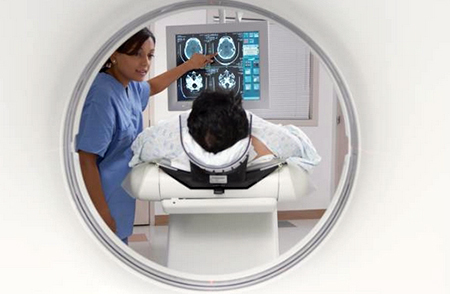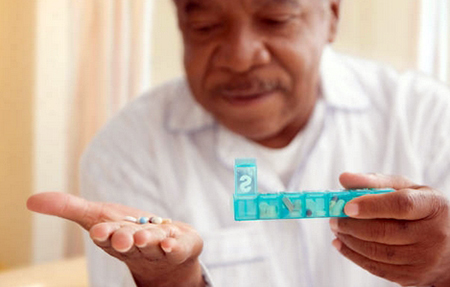What are cerebral circulatory disorders and how are they treated?


The spinal cord and brain are responsible for the most important processes in the body, failure in their work entails the development of various diseases. The cause of many pathologies can be a violation of cerebral circulation, i.e. blood flow in the brain that ensures that all of its parts are sufficiently saturated with oxygen.
What are the reasons for this process, and what remedial measures should be taken to eliminate it? This and much will be discussed in this article.
Acute and chronic cerebral circulatory disorders causes
The human brain and spinal cord are permeated with multiple blood vessels that ensure blood flow at a certain speed and pressure. Blood supplies all organs with oxygen and nutrients.
Impaired blood flow in the brain is observed when there is insufficient supply of blood to its parts. This process is accompanied by unpleasant symptoms, untimely treatment leads to serious complications (oxygen starvation, etc.).
The main causes of the disease:

- Genetic inheritance;
- Thin and fragile blood vessels;
- Atherosclerosis;
- High blood toughness;
- Heart diseases;
- Elevated arterial tension;
- Musculoskeletal system diseases;
- Diabetes;
- Excess weight;
- Abuse of alcoholic beverages and tobacco products;
- Taking a certain group of medications (for instance, hormonal contraceptives);
- Chronic stress;
- Physical stress;
- Improper nutrition (either unhealthy diet or restrictive diets followed for long time).
Cerebral circulatory disorders symptoms
In older people the incidence is much higher. This is explained by chronic diseases, accumulation of bad habits and many years of unhealthy lifestyle that cause violations in the healthy blood flow.
Vascular nature of cerebral blood flow violation can provoke:
- Transient violations;
- Full or fractional obstruction of blood vessels;
- Breakage of blood vessels and bleeding in the brain.
It is crucial to recognize the violation of brain circulation at an early stage, this will help lowering the risk of accompanying diseases and complications.
Types of vascular genesis
Brain blood flow violation can be acute or chronic:
- Acute stage. Most commonly it is a stroke. The symptoms develop suddenly. It is distinguished by a long course and the occurrence of complications (vision loss, speech and movement disorders, etc.);
- Chronic impairment of cerebral circulation. It commonly occurs as a result of atherosclerosis or chronically elevated arterial hypertension.
Types of cerebral circulatory disorders
Symptoms/alarming signs
Symptoms of brain blood flow violation are contingent on its type and stage. Acute stroke manifests in severe and sudden headache, nausea and vomiting, increased breathing and heart rate, impaired speech and coordination, numbness of the limbs or one side of the face, double eyes, slight squint.

A strong stress often leads to ischemic stroke the especially in atherosclerosis. The patient suffers from severe headache, impaired speech and coordination.
There is a transitional stage between the acute and chronic form. In this case, impaired blood circulation in the brain occurs with a combination of chronically elevated arterial tension and atherosclerosis. Signs:
- Loss of sensitivity of half of the body or face, but which are concentrated foci of vascular origin;
- Epileptic seizure, partial paralysis;
- Lightheadedness;
- Enhanced sensitivity to light (reaction of the pupils of the eyes to bright light);
- Split eyes;
- Loss of orientation;
- Partial memory loss.
Often, these people suffer from frequent mood swings and inability to focus.
At the second stage, noise in the head, poor motor coordination, inadequate reactions are added to the above symptoms. Besides, the patient becomes drowsy, loses attention, their working capacity is significantly reduced.
At the last stage, there is an exacerbation of symptoms. A person loses memory and control over himself, tremors appear in the limbs.
Untimely treatment is fraught with the death of the brain neurons due to the oxygen deficiency. These cells cannot be restored which means that a patient can become disabled for the rest of their life.
Diagnosing brain vascular disorders
In the occurrence of first signs it is crucial to go to a doctor and undergo a comprehensive diagnostic examination that includes:

- MRI of the brain vessels;
- Electroencephalography;
- Computed tomography (CT);
- Ultrasound examination;
- Consultation with a neurologist.
The most precise method of diagnosis is MRI. It allows identifying the site of the blood circulation violation precisely.
Electroencephalography is another widely used diagnostic method that is used for the diagnosis of epilepsy, speech disorders or brain injuries.
Computed tomography helps identifying the nature of the circulation violation, i.e. whether it is acquired or congenital. It also allows examining brain condition in detail.
The difficulty in diagnosing cerebral circulatory disorders is the lack of typical signs. The symptoms are similar to other pathologies so to find out the true cause doctors need to conduct simultaneously several studies.
Main treatment methods of cerebral circulatory disorders
After conducting all diagnostic examinations, a doctor prescribes individual treatment plan that mostly consists of medications aimed at the restoration of normal blood circulation in the brain.
It is crucial to correctly identify the form and stage (severity) of the cerebral circulatory disorder as it determines the therapeutic methods and their effectiveness.
Drug therapy for cerebral circulatory disorders

Drug therapy helps to slow down the progression of the disease but cannot fully return the patient their lost abilities (speech, movement, etc.). Thus it is crucial to seek medical help in early symptoms of the cerebral circulatory disorders to prevent further worsening of the condition and severe complications.
For acute cerebral circulatory disorder of hemorrhagic type, doctors prescribe medications to lower arterial tension, stop bleeding, and reduction of swelling of the brain.
The scheme of treatment for hemorrhagic cerebral circulatory disorder:
- Medications to stabilize blood tension;
- Medicines to increase the permeability of the blood vessels walls, improve the function of blood clotting;
- Medicines to improve the rheological properties of blood (blood viscosity, plasma viscosity, hematocrit, aggregation and deformability of erythrocytes);
- Medicines to lower swelling.
The scheme of treatment for ischemic cerebral circulatory disorder:
- Medications to stabilize blood tension;
- Antiplatelet medicines;
- In some cases, anticoagulants;
- In some cases, carotid endarterectomy or stenting.
In ischemic stroke, arterial tension sometimes should be lowered but sometimes higher arterial tension is needed. In general, it is not recommended to be lowered unless:
- Systolic pressure is> 220 mm/HG or diastolic pressure is> 120 mm/HG at 2 consecutive readings with a difference of> 15 min;
- There are signs of damage to the other organs susceptible in case of stroke (for instance, aortic dissection, acute myocardial infarction, lungs swelling, and others);
Patients with suspected thrombosis or embolism are treated with one or a combination of the following:
- tPA administration, local thrombolysis, and/or mechanical thrombectomy;
- Antiplatelet drugs;
- Anticoagulants;

In most cases, the medicines are administered intravenously or intramuscularly. In elevated intracranial pressure puncture is made.
If a patient is diagnosed with chronic insufficiency of cerebral circulation, antioxidants, ventotonics, neuroprotectors, agents that improve blood circulation are prescribed.
Besides, considering that ischemic cerebral circulation violation is commonly caused by stress, mild sedatives and vitamin complexes are also indicated.
If cerebral circulation is violated due to atherosclerosis, medications that help break down cholesterol plaques are indicated. If there are multiple obstructions caused by plaques, surgery may be needed.
In 80% of patients who suffered a severe acute cerebral circulation violation neurological dysfunctions of different severity develop. It restricts social life and can cause disability.
Movement disorders are one of the most common aggravations of stroke and spastic paresis is one of the most common violations of this kind. It is a painful condition in which muscles, usually of one limb, are in a constant contraction/spasm. It is the most common cause of disability associated with stroke. To help patients with this complication, physical therapy and use of muscle relaxers such as tolperisone, baclofen, Tizanidine are indicated.
Home remedies for cerebral circulatory disorders
Cerebral blood circulation can be improved using herbal medicines such as infusions or decoctions based on medicinal plants: ginseng and lemongrass, hawthorn, chamomile, motherwort, etc.
Keep in mind that these folk remedies must be used only as an addition to the main therapy prescribed by a medical specialist or severe complications can develop. Before using any herbal medicines or supplements for a patient with cerebral circulatory disorders, consult a doctor.
Proper nutrition
Properly balanced nutrition plays an important role in prophylaxis and treatment of circulatory disorders. People prone to obesity must avoid fatty, spicy, fried, and smoked products. It is better to build the nutrition based on fresh fruits and vegetables, whole grains, fish, and seafood and lean meats.
Proper nutrition can help avoiding atherosclerosis and other diseases that cause cerebral circulatory violations.
Prevention and prophylaxis of cerebral circulatory disorders
The prevention of the disease includes generally healthy lifestyle that implies:

- Healthy and properly balanced nutrition;
- Use of vitamins and minerals helping strengthening blood vessel walls;
- Smoking cessation;
- Lowering the consumption of alcohol to 1-2 glasses of wine a week;
- Spending time outdoors;
- Moderate exercising;
- Minimization or control over stress (meditation, yoga, sedatives, etc.);
- In case of genetic predisposition – regular visits to neurologist and examinations of the brain function and brain blood vessels condition.
For the improvement of blood circulation, doctors recommend going to sauna 1-2 times a week unless you have contraindications. It helps opening obstructed vessels and enriches the brain with the sufficient amount of blood.
Blood circulation disorders in the brain are quite often. They develop due to different reasons and must be treated immediately. Otherwise, the risk of irreversible changes such as speech and movement violation, loss of cognitive functions, and so on dramatically increases. Keep in mind that self-medication is unacceptable as it can lead to disability or even death.
Post by: Rachel Lewis, Senior Medical Advisor at Medibank, Sydney, New South Wales, Australia
(Updated at Apr 13 / 2024)
Zanaflex articles:
Some of the trademarks used in this Web Site appear for identification purposes only.
All orders are reviewed by a licensed physician and pharmacist before being dispensed and shipped.
The statements contained herein are not intended to diagnose, treat, cure or prevent disease. The statements are for informational purposes only and is it not meant to replace the services or recommendations of a physician or qualified health care practitioner. If you have questions about the drugs you are taking, check with your doctor, nurse, or pharmacist.